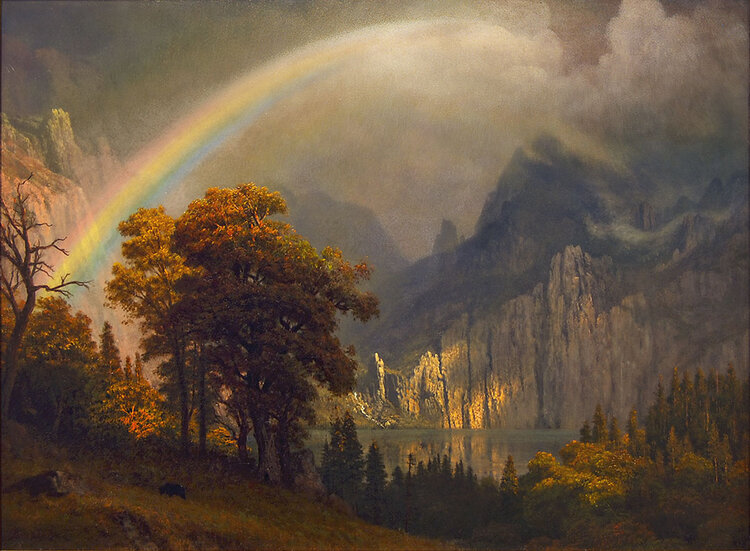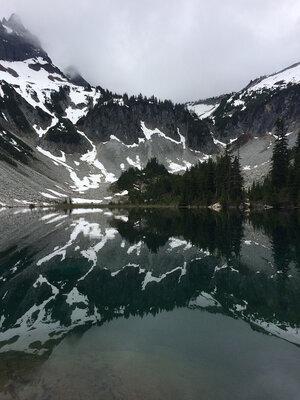Collection Connection is a series of personal responses by Museum staff to works in the Frye Art Museum’s collection.

Albert Bierstadt. Rainbow in the Sierra Nevada, ca. 1871-73. Oil on panel. Frye Art Museum, 1997.006. Photo: Susan Dirk/Under The Light
Seeing rainbows everywhere is one of my favorite things about June. While this year has been different—without the flags in business windows and multi-colored outfits of fellow Pride celebrators—Albert Bierstadt’s Rainbow in the Sierra Nevada reliably gives me the same warm fuzzy feeling I get from others showing their support and pride.
The original LGBT rainbow Pride flag first flew forty-two years ago this week, on June 25, 1978 in San Francisco. While American artist and activist Gilbert Baker (1951-2017) has long been credited as the designer of that original eight-color rainbow flag, it was truly a collaboration between Baker, Lynn Segerblom (then known as Faerie Argyle Rainbow), James McNamara, and a team of 30 volunteers. Each of the eight original colors represented a different aspect of an individual. From the first design to the now ubiquitous six-color version, this symbol has changed over time for many different reasons. In 2017, Philadelphia debuted an eight-color flag that added stripes to be more overtly inclusive of Black and Brown LGBTQIA community members. The flag’s design and symbolism is evolving and changing over time, and I look forward to seeing it adapt as we demand more representation and recognition of the intersectional nature of queer people’s identities.

More Color More Pride Philadephia Pride flag, 2017
While Bierstadt captured his Sierra Nevada rainbow a century before the birth of the Pride flag, in my eye the painting evokes the hopefulness that has become such an integral part of the symbol. The beautiful light falling on the mountainside, reflecting off the surface of the lake in this painting always compels me to seek the outdoors—perhaps one of the beautiful alpine lakes of the Pacific Northwest that offer beautiful blue waters and mountain reflections in their glassy surfaces. We could probably all use a hike right about now!

Bierstadt spent a significant amount of his life in the great outdoors making studies for his monumental paintings, which he completed in his studio. He traveled to the American West repeatedly throughout his adult life, and these trips ultimately produced many of his most loved paintings. His large scale landscapes served to transport people during his time as they continue to do for viewers today.
So whether you’re celebrating Pride this weekend or getting out into nature, Bierstadt’s piece is a great companion.
Rachel Townsend
Communications Associate